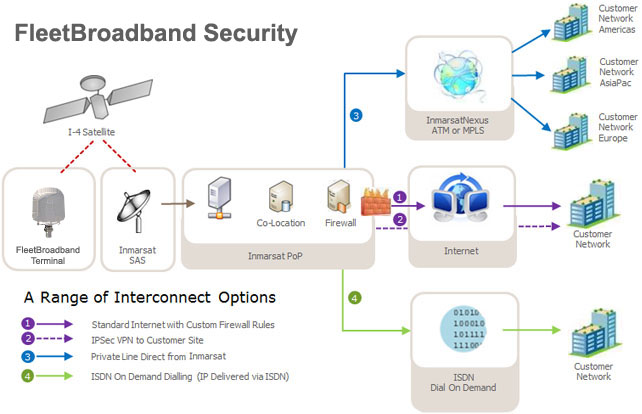Satellite systems operated by the Inmarsat company, overseen by the International Mobile Satellite Organization (IMSO) are also important elements of the GMDSS. The types of Inmarsat ship earth station terminals recognized by the GMDSS are: Inmarsat B, C and F77. Inmarsat B and F77, an updated version of the now redundant Inmarsat A, provide ship/shore, ship/ship and shore/ship telephone, telex and high-speed data services, including a distress priority telephone and telex service to and from rescue coordination centers. Fleet 77 fully supports the Global Maritime Distress and Safety System (GMDSS) and includes advanced features such as emergency call prioritisation. The Inmarsat C provides ship/shore, shore/ship and ship/ship store-and-forward data and email messaging, the capability for sending preformatted distress messages to a rescue coordination center, and the Inmarsat C SafetyNET service. The Inmarsat C SafetyNET service is a satellite-based worldwide maritime safety information broadcast service of high seas weather warnings, NAVAREA navigational warnings, radionavigation warnings, ice reports and warnings generated by the USCG-conducted International Ice Patrol, and other similar information not provided by NAVTEX. SafetyNET works similarly to NAVTEX in areas outside NAVTEX coverage.
Inmarsat C equipment is relatively small and lightweight, and costs much less than an Inmarsat B or F77 station. Inmarsat B and F77 ship earth stations require relatively large gyro-stabilized unidirectional antennas; the antenna size of the Inmarsat C is much smaller and is omnidirectional.
Under a cooperative agreement with the National Oceanic and Atmospheric Administration (NOAA), combined meteorological observations and AMVER reports can now be sent to both the USCG AMVER Center, and NOAA, using an Inmarsat C ship earth station, at no charge.
SOLAS now requires that Inmarsat C equipment have an integral satellite navigation receiver, or be externally connected to a satellite navigation receiver. That connection will ensure accurate location information to be sent to a rescue coordination center if a distress alert is ever transmitted.
Also the new LRIT long range tracking systems are upgraded via GMDSS Inmarsat C which are also compliant along with inbuilt SSAS, or ship security alert system. SSAS provides a means to covertly transmit a security alert distress message to local authorities in the event of a mutiny, pirate attack, or other hostile action towards the vessel or its crew.

